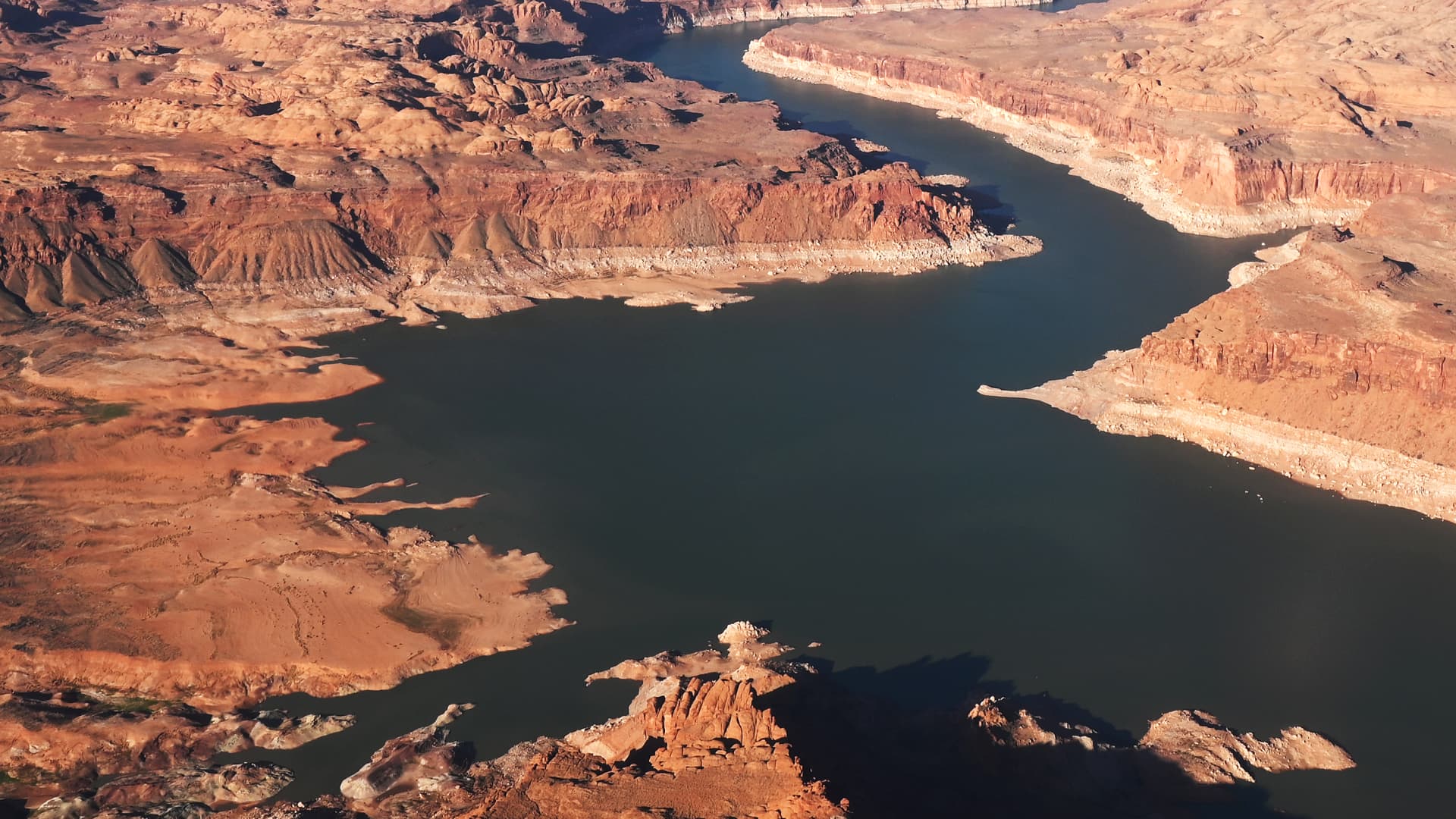Products You May Like
The federal government on Tuesday announced it will delay the release of water from one of the Colorado River’s major reservoirs, an unprecedented action that will temporarily address declining reservoir levels fueled by the historic Western drought.
The decision will keep more water in Lake Powell, the reservoir located at the Glen Canyon Dam in northern Arizona, instead of releasing it downstream to Lake Mead, the river’s other primary reservoir.
The actions come as water levels at both reservoirs reached their lowest levels on record. Lake Powell’s water level is currently at an elevation of 3,523 feet. If the level drops below 3,490 feet, the so-called minimum power pool, the Glen Canyon Dam, which supplies electricity for about 5.8 million customers in the inland West, will no longer be able to generate electricity.
The delay is expected to protect operations at the dam for next 12 months, officials said during a press briefing on Tuesday, and will keep nearly 500,000 acre-feet of water in Lake Powell. Under a separate plan, officials will also release about 500,000 acre-feet of water into Lake Powell from Flaming Gorge, a reservoir located upstream at the Utah-Wyoming border.
Officials said the actions will help save water, protect the dam’s ability to produce hydropower and provide officials with more time to figure out how to operate the dam at lower water levels.
“We have never taken this step before in the Colorado Basin,” assistant Interior Department secretary Tanya Trujillo told reporters on Tuesday. “But the conditions we see today, and what we see on the horizon, demand that we take prompt action.”
Federal officials last year ordered the first-ever water cuts for the Colorado River Basin, which supplies water to more than 40 million people and some 2.5 million acres of croplands in the West. The cuts have mostly affected farmers in Arizona, who use nearly three-quarters of the available water supply to irrigate their crops.
In April, federal water managers warned the seven states that draw from the Colorado River that the government was considering taking emergency action to address declining water levels at Lake Powell.
Later that month, representatives from the states sent a letter to the Interior agreeing with the proposal and requesting that temporary reductions in releases from Lake Powell be implemented without triggering further water cuts in any of the states.
The megadrought in the western U.S. has fueled the driest two decades in the region in at least 1,200 years, with conditions likely to continue through 2022 and persist for years. Researchers have estimated that 42% of the drought’s severity is attributable to human-caused climate change.
“Our climate is changing, our actions are responsible for that, and we have to take responsible action to respond,” Trujillo said. “We all need to work together to protect the resources we have and the declining water supplies in the Colorado River that our communities rely on.”
